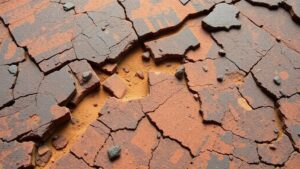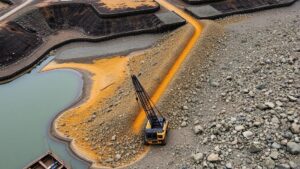Recovering Silver From Volcanic Ash Layers Using Hand-Panning Methods
Recovering Silver From Volcanic Ash Layers Using Hand-Panning Methods
Volcanic eruptions can lead to the deposition of ash layers rich in various minerals, including precious metals like silver. The process of recovering silver from these deposits can be effectively achieved through hand-panning methods, a technique that has been historically used in gold mining. This article explores the principles of hand-panning and its application in recovering silver from volcanic ash layers.
Understanding Volcanic Ash Layers
Volcanic ash is composed of fine particles ejected during a volcanic eruption, and it often settles in layers over large areas. e layers can contain various minerals, including silver, which can occur either as native metal or within mineral compounds such as argentite (Ag2S).
- Composition: Volcanic ash typically contains silica, aluminum, iron, magnesium, and trace amounts of precious metals.
- Location: Ash layers can be found in regions around active or dormant volcanoes, with deposits often found near river systems where erosion has occurred.
The Hand-Panning Process
Hand-panning is a traditional method used to separate valuable minerals and metals from larger sediment and debris. This method is particularly valuable in areas where heavy machinery is either impractical or too costly.
- Equipment needed: A hand pan, commonly made of metal or plastic, with a wide, shallow shape designed to facilitate the washing away of lighter materials.
- Sample collection: Careful selection of ash samples from layers where silver is most likely to be concentrated (e.g., near volcanic glass or heavy mineral deposits).
Steps for Hand-Panning Silver from Ash
The hand-panning process involves several key steps aimed at separating silver from volcanic ash. Here’s how it can be carried out:
- Sample Preparation: Collect ash samples and allow them to dry. Fine ash is preferable as it tends to retain heavier minerals more effectively.
- Initial Washing: Place the ash sample in the pan and add water. Swirl the pan to allow lighter material to float away, leaving behind heavier particles, including potential silver.
- Concentration: Continue to wash away lighter materials, periodically checking for the appearance of silver particles or associated minerals.
- Final Capture: Once heavier materials are concentrated at the bottom of the pan, carefully examine and extract these materials for further analysis.
Potential Challenges and Considerations
While hand-panning is a relatively simple and cost-effective method, it does come with certain challenges that practitioners should be aware of:
- Skill and Experience: Effective hand-panning requires practice to master the technique of swirling and washing without losing valuable materials.
- Regulatory Considerations: Miners should be aware of local regulations regarding mineral recovery, including necessary permits for activities that might disturb natural habitats.
- Material Variability: The composition of volcanic ash varies significantly, which can affect recovery efforts and overall yield.
Case Studies: Successful Recoveries
Numerous regions, especially around the Pacific Ring of Fire, have yielded successful silver recoveries from volcanic ash. For example:
- Mount St. Helens: Following its eruption in 1980, local miners reported recoveries of small quantities of silver alongside gold from ash deposited in river systems.
- Pinatubo Ash Deposits: Similar techniques have been documented in the aftercare of deposits from the 1991 eruption of Mount Pinatubo in the Philippines, demonstrating valuable mineral recovery potential.
Actionable Takeaways
The recovery of silver from volcanic ash layers using hand-panning methods presents an intriguing opportunity for both amateur and professional miners. To maximize the chances of successful recovery, practitioners should focus on:
- Mastering proper hand-panning techniques through practice and patience.
- Researching local geology and ash deposit composition to identify promising locations for sample collection.
- Ensuring compliance with legal regulations to conduct mineral recovery responsibly and sustainably.
By employing these strategies,miners can optimize their hand-panning efforts and potentially enrich their findings with silver and other precious metals hidden in volcanic ash layers.


